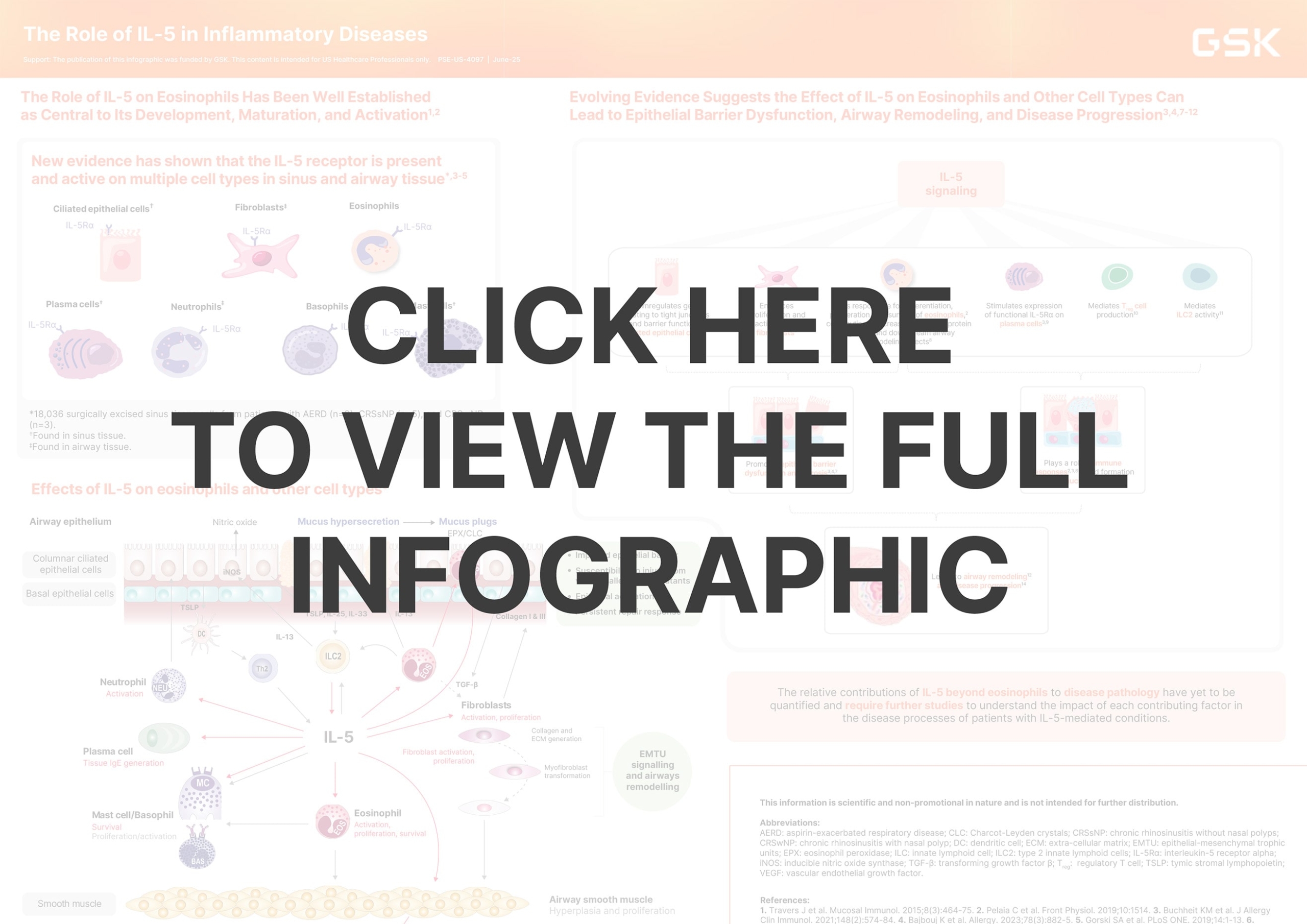The publication of this infographic was funded by GSK. This content is intended for US Healthcare Professionals only.
![]()
This infographic explores the expanding understanding of interleukin-5 (IL-5) in inflammatory diseases, highlighting that IL-5 impacts not only eosinophils but also a broad range of other cell types in sinus and airway tissues. Evolving evidence suggests that IL-5 contributes to epithelial barrier dysfunction, airway remodeling, and disease progression through its multifaceted cellular effects.
Key Takeaways:
- IL-5 signaling affects multiple immune and structural cell types beyond eosinophils, including epithelial cells, fibroblasts, plasma cells, and neutrophils.
- These effects can contribute to key disease processes such as epithelial barrier dysfunction, fibrosis, and airway remodeling.
- The presence of IL-5 receptors across diverse cell types suggest a broader role in immune responses and chronic airway disease pathology.








